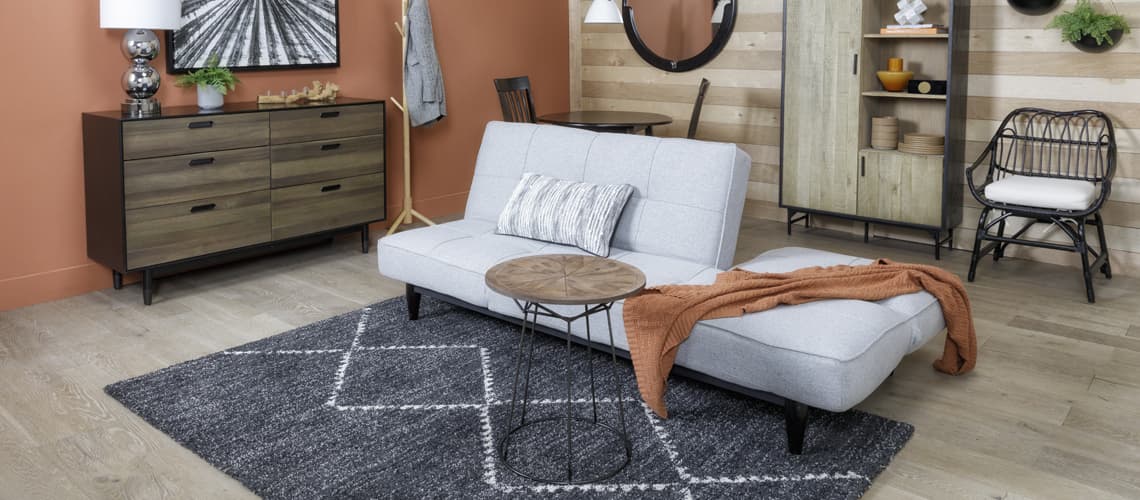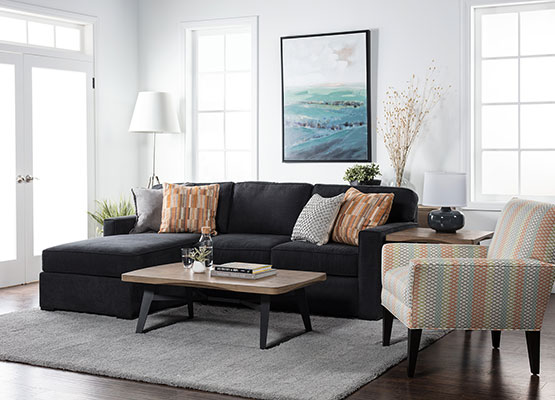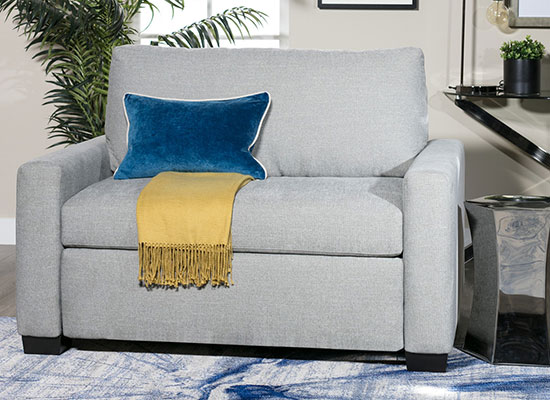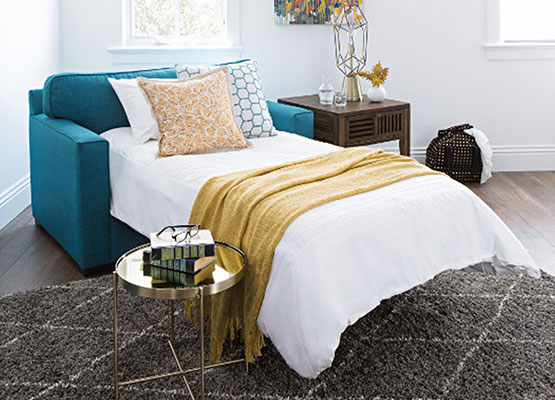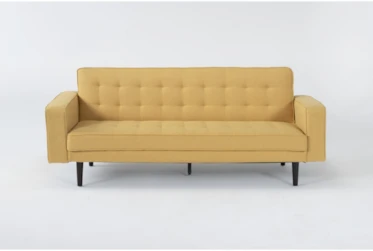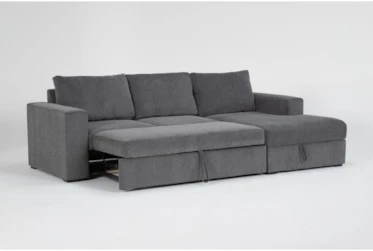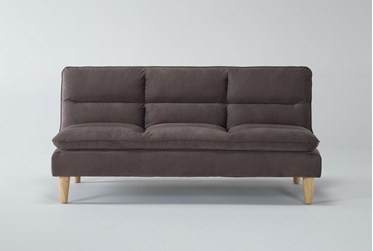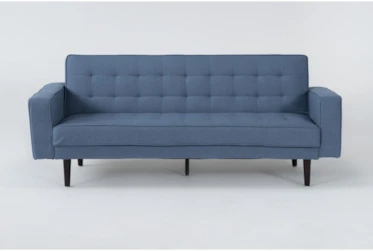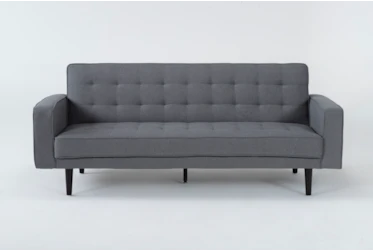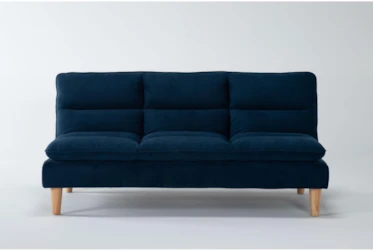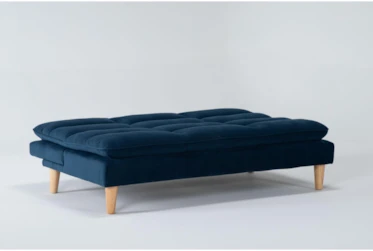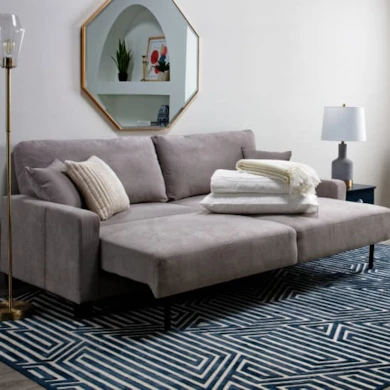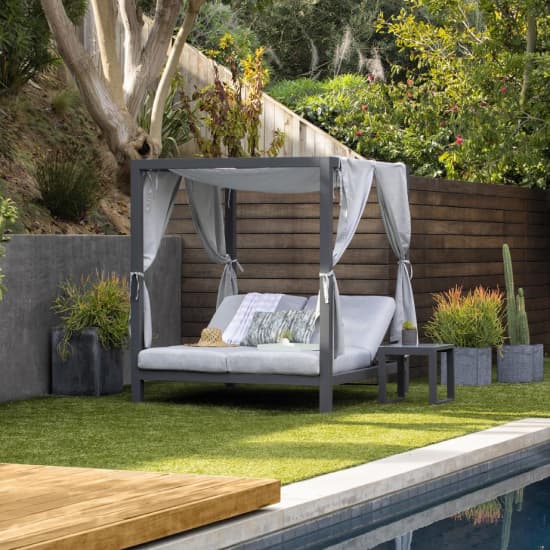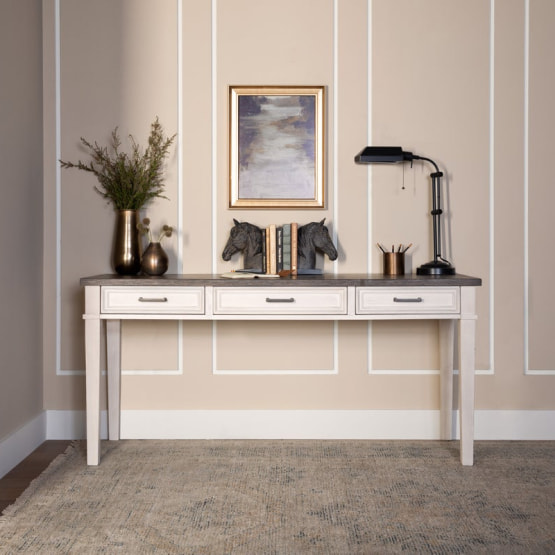What Is a Futon?
History of the Futon
The futon originated in Japan as a thin mattress meant to be placed directly on the floor or floor mat and which could be rolled up when not in use. When the futon was introduced to Western society, and touted as a firmer, more spine-aligning alternative to traditional American mattresses, the futon grew in popularity. Over time, the futon evolved into thicker, plusher comfort levels and a variety of designs, including pullout bedframes and sofa and bed combinations. In American furniture lexicon today, the futon is often synonymous with the modern sofa sleeper.
What Is the Difference Between a Futon, Sofa Bed and Daybed?
While the terms 'futon, 'sofa bed' and 'daybed' are often used interchangeably, there is a difference between them.
Futon vs. Sofa Bed
A futon sleeper differs from a sofa bed by how the mattress is incorporated into the sofa design itself. In a futon, the cushions for sleeping and the cushions for sitting are the same. In a sofa bed, the mattress usually rests on a separate frame, often built under the sofa seats. In order to convert a sofa bed into a nighttime mattress for sleeping, the bed frame must be pulled out from under the sofa design.
Because the seat cushion of a futon is the same as the mattress, futons tend to have a distinct look. While a sofa bed's seat cushions can be more tailored for two people sitting upright, with a plusher look resembling a traditional loveseat's or sofa's seat cushions, a futon's seat cushions are flatter, firmer and tufted in grids like a traditional mattress.
Daybed vs. Futon
Unlike a futon and a sofa bed or sofa sleeper, a daybed does not 'convert' or 'transform;' a daybed is simply a furniture design that provides enough seating and cushion area that it can be used for lounging by day – and comfortably sleeping by night. Daybeds differ from actual sofas in looks most commonly by their sleeker size and lack of arms and/or backrest.
Types of Futons
There are different types of futons, and some common ones are small futons, traditional futons and armless futons. Small futons are designed for small spaces such as small bedrooms or small apartment living rooms; these are closer in size to a loveseat and can fit only about one to two people when in the seating position. Traditional futons look the most like sofas, containing arms, a large seating area and a backrest. The third common type, armless futons, is distinguishable by its lack of arms and is rising in décor trends due to its versatile, small space-friendly shape.
Futon Room Ideas
Thanks to their shapeshifting abilities (futons really do possess furniture superpowers!), futons can be styled in virtually every room of the house, excluding, of course, the bathroom and kitchen! Use a futon in a living room as your daily seating for TV-watching and family time, employing its sleeper function for your occasional overnight guest. Or, try a futon in a bedroom as your bed; if you’ve tried it in store and know that you would sleep comfortably on it night after night, a futon as opposed to a traditional bed may be the better choice if you can’t afford a traditional bed. Finally, consider a futon as a home office piece; compared to a sofa, futons tend to have firmer seating and can actually make for a more comfortable spot when working for long hours.
Featured Products
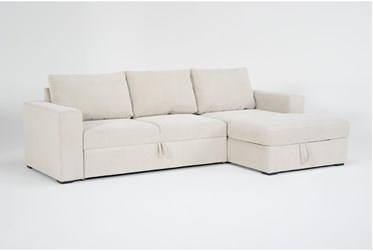
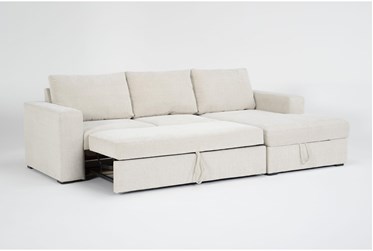
Sebastian Cream 111" 2 Piece Convertible Sleeper Sectional with Right Arm Facing Storage Chaise
$1,395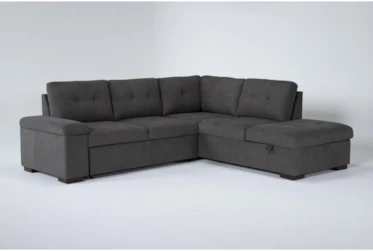

Flinn 103" 2 Piece Convertible Sleeper Sectional with Right Arm Facing Storage Chaise
$1,295

Sebastian Slate 111" 2 Piece Convertible Sleeper Sectional with Left Arm Facing Storage Chaise
$1,395

Flinn 103" 2 Piece Convertible Sleeper Sectional with Left Arm Facing Storage Chaise
$1,295— More Great Articles —
Explore Futons
Read the Latest
Editorial Disclaimer: Articles featuring tips and advice are intended for educational purposes and only as general recommendations. Always practice personal discretion when using and caring for furniture, decor and related items.
